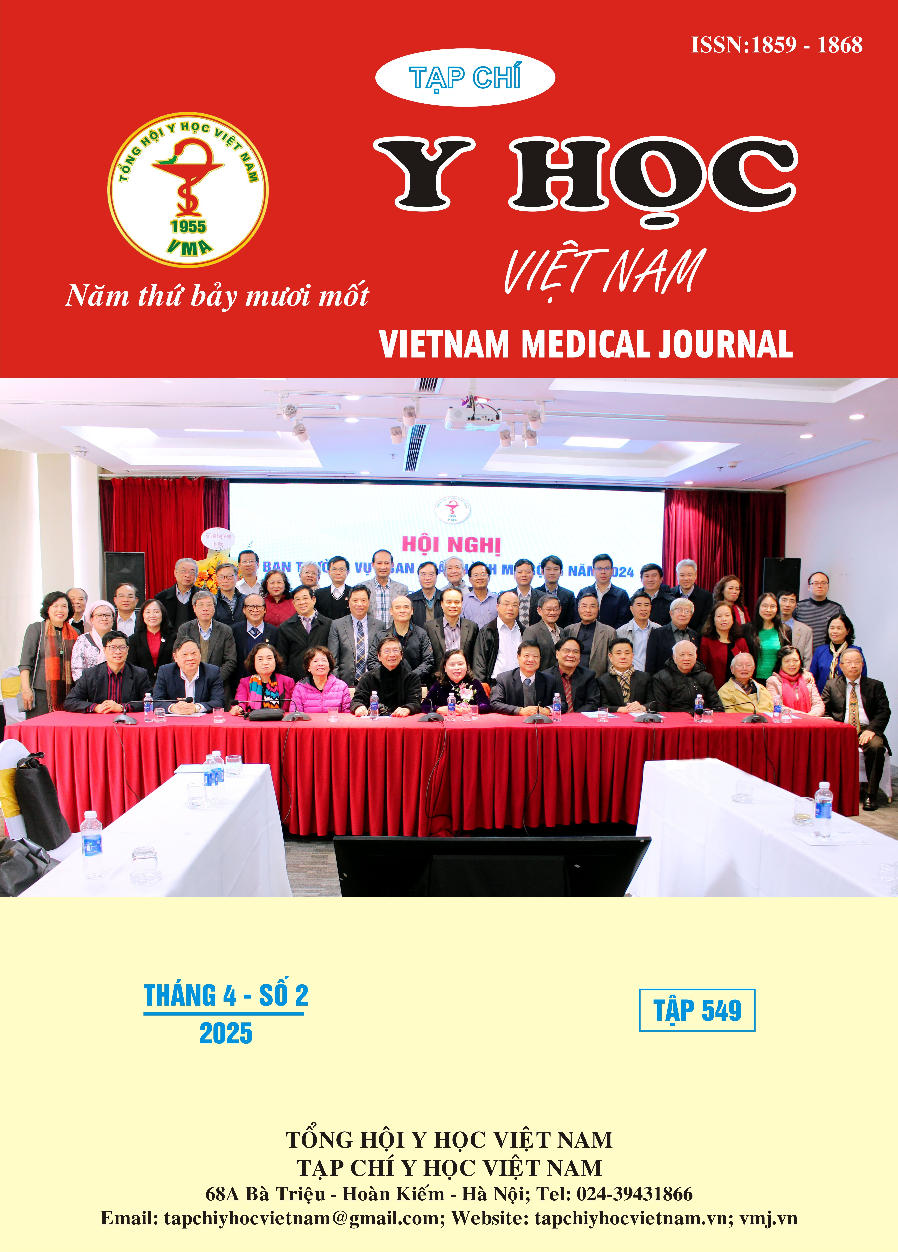STUDY ON THE ROLE OF RETICULOCYTE HEMOGLOBIN INDEX (RET-HE) IN DETERMINING LATENT IRON DEFICIENCY (LID) IN PHILANTHROPIC BLOOD DONORS AT TAY NGUYEN REGIONAL GENERAL HOSPITAL
Main Article Content
Abstract
Objectives: Investigation of Latent Iron Deficiency through the Measurement of Hemoglobin Content in Reticulocyte Red Blood Cells (Ret-He) in Humanitarian Blood Donors. Patients and methods: Descriptive Cross-Sectional Study. Results: Among 321 voluntary blood donors at Tay Nguyen Regional General Hospital from December 2021 to October 2022, we found no correlation between latent iron deficiency (LID) and the age of the donors. No correlation was found between LID and the weight of the donors. The average Ret-He concentration was 31.6 ± 3.2 (pg), with Ret-He values ranging from 18 (pg) to 38.8 (pg), and the highest frequency was around the average value of 31.6 ± 3.2 (pg). The average Ret-He concentration in males was 32.2 ± 3.0 (pg), which was higher than that in females at 30.9 ± 3.3 (pg), with statistical significance (p < 0.001). The rate of female blood donors with LID was 29.8%, higher than the rate for male donors at 15.0%, which was statistically significant (p < 0.05). The rate of donors with two or more donations (28.8%) with LID was higher than that of first-time donors (18.4%), and this difference was statistically significant (p < 0.05). Conclusion: In this study, the frequency distribution of Ret-He was concentrated at levels indicating no iron deficiency. The average Ret-He concentration in males was higher than that in females, which was statistically significant. The rate of female blood donors with LID was higher than that of male donors with LID, with statistical significance. Additionally, the rate of donors with two or more donations who had LID was higher than that of first-time donors, which was also statistically significant.
Article Details
Keywords
Hemoglobin Content in Reticulocyte Red Blood Cells, Latent Iron Deficiency
References
2. Cai J, Wu M, Ren J, et al. Evaluation of the Efficiency of the Reticulocyte Hemoglobin Content on Diagnosis for Iron Deficiency Anemia in Chinese Adults. Nutrients. 2017;9(5):450. Published 2017 May 2.
3. Datta S PM, Ghosh C. Effect of frequent blood donation on iron status o blood donors in Burdwan, West Bengal, India. J Drug Deliv Therap 2013;3(6):66–69.
4. Dara RC, Marwaha N, Khetan D, Patidar GK. A Randomized Control Study to Evaluate Effects of Short-term Oral Iron Supplementation in Regular Voluntary Blood Donors. Indian J Hematol Blood Transfus. 2016;32(3):299-306.
5. Mahida VI, Bhatti A, Gupte SC. Iron status of regular voluntary blood donors. Asian J Transfus Sci. 2008;2(1):9-12.
6. Mittal R, Marwaha N, Basu S, Mohan H, Ravi Kumar A. Evaluation of iron stores in blood donors by serum ferritin. Indian J Med Res. 2006;124(6):641-646.
7. Tiwari AK, Bhardwaj G, Arora D, et al. Applying newer parameter Ret-He (reticulocyte haemoglobin equivalent) to assess latent iron deficiency (LID) in blood donors-study at a tertiary care hospital in India. Vox Sang. 2018;113(7):639-646.
8. Urrechaga E, Borque L, Escanero JF. Clinical Value of Hypochromia Markers in the Detection of Latent Iron Deficiency in Nonanemic Premenopausal Women. J Clin Lab Anal. 2016;30(5):623-627.


